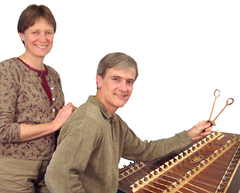
Fremont, the hip, quirky, artistic neighborhood sometimes called the Greenwich Village of Seattle, is home to a solstice parade, an enormous rocket, a far-greater-than-lifesize bronze statue of Communist revolutionary Vladimir Lenin and the famous 18-foot-high, two-ton Fremont Troll that hunkers down under one end of the Aurora Bridge clutching an original VW beetle in its enormous concrete hand. It is also home to Dusty Strings, an enigmatic acoustic music store that is a primary outlet for the magnificent Celtic harps and hammered dulcimers made by owners Sue and Ray Mooers and their crew.
For Ray, woodworking started early, but not quite as early as disassembling. “As a child, I would always take all my toys apart,” Ray admitted, “and was fascinated by how the toy worked. I recall once when I was five years old, I took my parents’ windup alarm clock apart, but could not figure out how to put it back together again. Rather than own up to the disaster, I buried it in the backyard. I thought that would be the end of it, but, of course, that did not work.
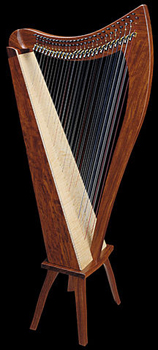
“My first woodworking experience was in ninth grade shop class, where I built a simple but seaworthy eight-foot boat. That was about it for woodworking until after college. I intended to go to dental school after college, because my father was a dentist, but wound up getting a degree in botany. I did not get into dental school, but in 1976, I went to the Folklife Festival, the premier folk festival in the Pacific Northwest, and probably the largest of its kind in the United States. There I saw a hammered dulcimer, and fell in love.”
In case you are not familiar with it, a hammered dulcimer looks like a large, trapezoid-shaped box with a multitude of strings stretched across it. You play it by hitting the strings with light wooden “hammers” or mallets that are slightly reminiscent of the hammers inside a piano.
Although it was a hammered dulcimer that stole his heart that day, he was soon to fall in love yet again. “That same year, I met Sue while playing guitar at a wedding gig. She was the maid of honor, but was nonetheless willing to talk to one of the musicians,” Ray joked. “We met on the afternoon of the rehearsal; sparks flew and it was love at first sight, and we were married in 1978.
“Meanwhile, I was in my fifth year at college when a visiting instrument maker came by the school with a vanload of folk instrument kits. I bought a hammered dulcimer kit and a mountain dulcimer kit. My roommate, Randy, built the hammered dulcimer, and I built the other at our home. Sadly, the hammered dulcimer kit parts did not fit, so we took some two by fours and paneling, paired it with the hardware from the kit, and made a workable instrument. I still have that original instrument. It’s ugly as sin, and always gets a laugh when people see it next to our current work.”
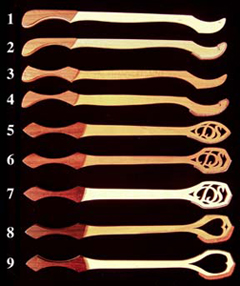
“That inspired us to build more instruments so that we had better ones to play. As we learned tunes, we’d play at street fairs, switching off between guitar and dulcimer. People would ask us where they could get one, so we started offering to build them for others. We built a dozen or so in our house, turning the house into a workshop and small showroom store. In 1978, Randy moved out of state. At the time, I was working as a restaurant manager and building dulcimers as a hobby. On January 1, 1979, I quit my job and became a full-time hammered dulcimer maker, and Dusty Strings became an official company, albeit still in my house.”
The curious company name came from a combination of reality and history. “We looked over a long list of names,” Ray recounted, “but wanted something different. One reason for the name was that hammered dulcimers, our original instrument, were a historic instrument. They had been manufactured during their heyday from the late 1800s through the 1920s. After that, many were put away in attics and, consequently, got dusty. When the folk music revival came about in the late 1960s and early 70s, they came out of the attics and had their dust blown off. Dusty Strings is our tongue-in-cheek way of recognizing that. Adding to the image was the fact that in the early days of operation, before we got good dust collection, our shop was attached to the store, so finished instruments often sported a layer of woodworking dust.
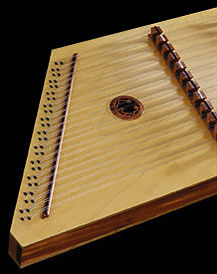
“In 1980, Sue and I bought the house I was living in and continued building instruments there until 1982. By then, we were up to five employees, and decided to move into a commercial building in Fremont. We expanded to 2,500 feet of shop and store space and had the option to expand to 9,000 feet. It took us about 10 years, but we eventually filled it all. It wasn’t until 2002 that we expanded even further, adding another building in Seattle strictly for manufacturing, which allowed us to spread the store to fill our first location. Today, we have 40 employees, almost three quarters of whom either build or repair instruments.
“During the early years, Sue had a ‘real’ job and was supporting us while I was trying to create an instrument business. I recall once when I had only one rubber sanding block and no power sanders thinking I could increase production if I had four sanding blocks, each with its own paper grit, but that was a major purchase in those days. It was not until 1983 that Sue quit her job and joined the company full-time.
“By 1984 ,we offered seven models of hammered dulcimers and were looking for something else to make. Harps had long been a fascination of mine, and some of the stores we sold dulcimers to were asking for Celtic harps, so that’s what we added. Our top of the line harp is built with arched staves that make the instrument look more like a rowing shell and is surprisingly difficult to make. We currently make nine models of harps and 11 models of hammered dulcimers, but the harps outsell dulcimers by about three to one. Ironically, hammered dulcimers, the instruments we started with, are now playing second fiddle to harps.”
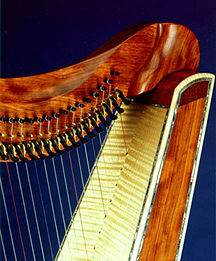
No stranger to innovation, Ray has added to the field of instrument making scads of good technical information about building these unusual instruments and currently has a patent pending for an assembly technique for the soundbox of their entry-level harp. In addition to being an oasis for the folk musicians of the Seattle area, their store hosts an annual ukulele festival and an annual harp symposium.
Still, the main thrust of the business is making instruments that make music, but there is more to it for them than simple woodworking. “All of us here have a high level of pride in our products,” Ray explained. “We often get recordings from artists who use our instruments, or see them in concert.”
Lately, though, their instruments have taken on another rather unusual role. “Currently there’s a groundswell of interest in using harps for healing therapies,” Ray told me. “Some of our instruments end up in hospitals or hospice centers helping patients, where the music will actually lower blood pressure, respiratory rate and anxiety. Our employees are quite touched by this, and we’re proud to be creating things that truly help people.
“For me, building instruments is about enhancing people’s lives through music,” Ray insists. “It creates the tools for people to create music, which takes them out of the realm of work and the technical world in which we live and gives them freedom of expression. Instruments take them away, hopefully to somewhere more peaceful.”






